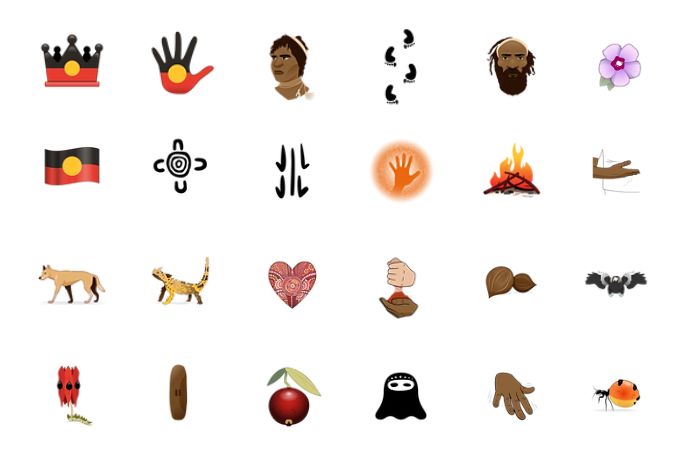Lesson summary
Do you use emojis? What do you use them to say? With over 3200 digital emojis there must be one for everything and everyone! More emojis continue to be added to reflect the rapid evolution of language. Joel Liddle Perrurle is an Arrernte man from Central Australia who saw that Aboriginal perspectives were not adequately represented in emojis. Liddle worked alongside arts producer Caddie Brain and organised a young team to create 90 new emojis that reflect Aboriginal cultural meanings and messages, bridging the digital divide in some of the most remote communities. In this lesson, you’ll learn about Indigemojis and learn how to design and create emoji designs that reflect students’ personal and community-related identities.
Learning intentions:
Students will...
- learn about Indigemoji
- explore digital art as a symbolic form of cultural communication
- learn how to design and create one’s own emojis.
Success criteria:
Students can...
- explain the work and value of Indigemojis
- explain how symbolism works as a means of communication
- develop emojis that represent their culture and/or community.
Lesson guides and printables
Curriculum links
Select your curriculum from the options below.
Lesson details
Curriculum mapping
Australian curriculum (v9.0) content descriptions:
Design and Technologies:
Students learn to:
- generate, iterate and communicate design ideas, decisions and processes using technical terms and graphical representation techniques, including using digital tools (AC9TDE6P02).
General capabilities:
Syllabus outcomes: ST3-2DP-T, ST3-3DP-T
Cross-curriculum priority: Sustainability, Aboriginal and Torres Strait Islander Histories and Cultures.
Relevant parts of Year 5 and 6 achievement standards: Design Technology
Students explain how people design products, services and environments to meet the needs of communities, including sustainability. Students share and communicate ideas or content to an audience using technical terms, graphical representation techniques and appropriate digital tools.
Resources required
- Art supplies
- A device capable of creating audiovisual recordings, such as an iPad or camera
- Digital resources: Procreate, Emojiliy or Bitmoji (free versions may be limited in design options)
- Internet access to website computers and tablets
- Photocopiers, scanners (optional)
- Sticky notes
- Smartphones (*depends on the device policy in your school and state or territory)
- Student worksheet
- Writing materials.
Skills
This lesson is designed to build students’ competencies in the following skills:
- collaboration
- social skills
- problem-Solving
- curiosity
- initiative
- ethical understanding
- digital literacy
- cultural Understanding
- Intercultural understanding
- creativity
- Communication
- reflection
Additional info
This is a standalone lesson within the Bridging the Digital Divide Unit. For more practical activities that enhance the digital literacy of primary school students and to learn more about other First Nations Australian Leaders in Digital Technology, head to the rest of the Unit!
Level of teacher scaffolding: High – this activity is hands-on and requires a high level of teacher involvement in the lesson as the students work to make and create their emoji designs. Photographing, scanning or sharing (via device mirroring) of students’ work may also be required to share designs.
Cool Australia would like to thank and acknowledge the support of the _auDA Foundation _enabling us to create these lessons.
Related professional learning
Visualise Data in the Secondary Classroom
Quick Summary:
Infographics have grown in popularity because they communicate information quickly and clearly. These visual tools represent information, data or knowledge. In this hands-on course, you will build your ability to use infographics as a learning tool in your curriculum.


Welcome back!
Don't have an account yet?
Log in with:
Create your free Cool.org account.
Many of our resources are free, with an option to upgrade to Cool+ for premium content.
Already have an account?
Sign up with:
By signing up you accept Cool.org's Terms and Conditions(Opens in new tab) and Privacy Policy(Opens in new tab).